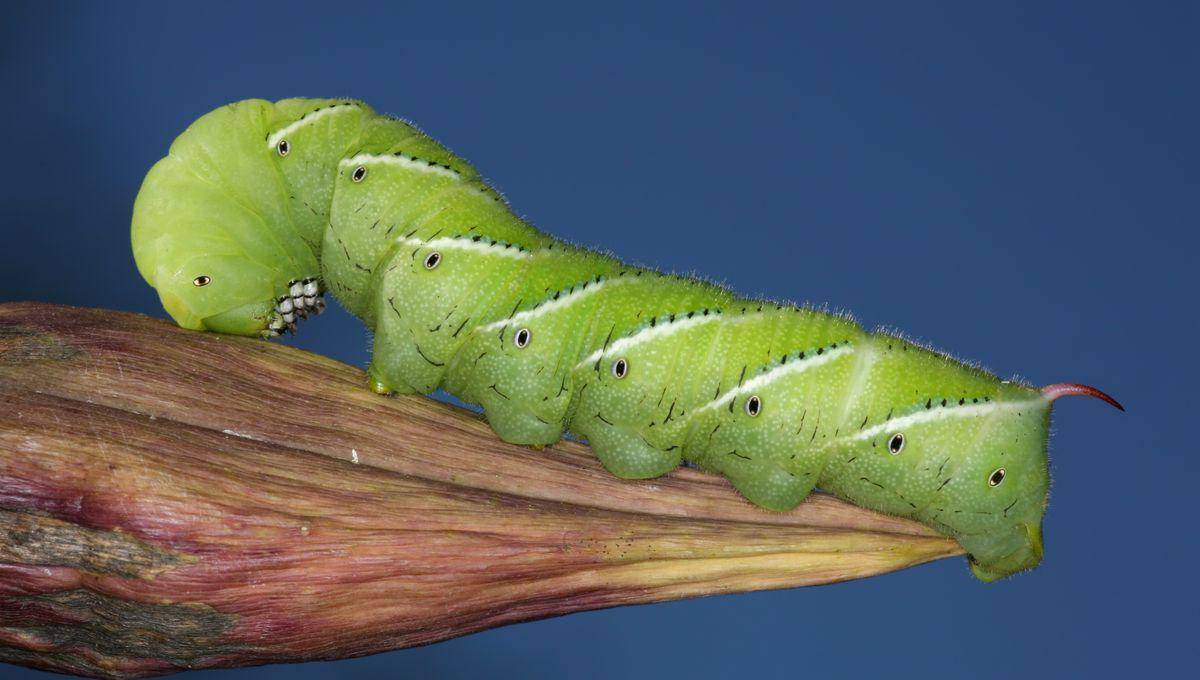-
Ροή Δημοσιεύσεων
- ΑΝΑΚΆΛΥΨΕ
-
Σελίδες
-
Blogs
-
Forum
Cool Calm Caterpillars: Tobacco Hornworms Can “Zone Out” Pain By Entering A Sphinx Pose

When Under Threat, These Caterpillars Do Their Best Sphinx Impression
In a battle to survive, most animals feel pain and react to stay alive. However, when it comes to the humble tobacco hornworm (Manduca sexta), researchers have discovered another strategy. Instead of a fight or flight response when exposed to noxious (harmful) stimuli, these caterpillars can enter a "sphinx" state and dial down their response to pain.
The rest of this article is behind a paywall. Please sign in or subscribe to access the full content. Noxious stimuli are recognized by a sensory system called nociception, which signals to the nervous system to adopt defensive behavior to minimize injury. Animals typically react strongly to these signals to confuse predators and protect themselves. For example, opossums can enter thanatosis (a fancy scientific name for playing dead) to fool predators and avoid being eaten, whilst some animals can pretend to be scary and mimic other organisms. Tobacco hornworm larvae are green caterpillars, familiar in the research world as a model organism for studying responses to noxious stimuli. During the larval stage of the Lepidoptera life cycle, caterpillars are slow prey and need heightened alertness to protect themselves from harm. It has been reported that these caterpillars have extensive reactions based on the location of where they have been poked. On the head or thorax, the caterpillar quickly pulls away; on the rear end, they can snap their heads forward to strike. But strangely, the tobacco hornworm caterpillars also have another defence – a party trick to “switch off” their pain reflex and do absolutely nothing. Scientists investigated different types of stimuli for inducing the caterpillar into this so-called "sphinx" state. These included vibrations (by tapping on the material the caterpillars were resting on), mechanosensory stimuli (stroking the caterpillar with a paint brush), head tapping, and moving their resting material. After a gentle disturbance, tobacco hornworm caterpillars curl their head and thorax downwards in a distinctive posture called the sphinx state, due to its resemblance to a sphinx statue. In this mode, the larvae show a reduction in responsiveness to noxious stimuli and harmless touches. Comparison of the sphinx posture with the normal active state of the caterpillar. Image credit: Kondakath et al, Biology Letters 2025 (CC BY 4.0) Every tested stimulus induced the caterpillar into the sphinx state. The highest trigger? Movement of their resting material, showing a 68.9 percent induction of the sphinx state. When the caterpillars were left alone, they did not enter the sphinx state spontaneously. Instead, they were observed doing their daily business of crawling, feeding, and pooping. No stimulus, no sphinx. To understand how this state is triggered, surgical experiments were performed on the caterpillars’ cerebral ganglion, the main part of the insect brain. They discovered that this brain region is essential for initiating the sphinx state, and the subesophageal ganglion (part of the brain that controls movement and sensory input) cannot activate sphinx mode on its own. This proves that it’s not just a passive reflex but an actively controlled behavior. The caterpillars are essentially “choosing” to suppress their nociceptive responses. It is interesting that the tobacco hornworm does not follow the stereotyped reaction to pain. This choice of suppression to nociceptive responses could offer an adaptive advantage, possibly by reducing movement and attention in the sphinx state when remaining still is the safer option, such as avoiding the attention of predators. Similar behavior has been observed in other insects. Hungry bumblebees have been seen tolerating painful heat to reach high-sucrose food. In fruit flies, starvation can induce a reduced nocifensive state through changes to their leucokinin signaling regulation (the way insects use the chemical messenger leucokinin to control important body functions). This research has highlighted nature’s incredible adaptability and the results “provide an opportunity to develop Manduca as a tractable model for studying how intrinsic circuits regulate and balance the expression of different behaviours,” the authors write. Even seemingly simple organisms can exhibit complex behavioral strategies to manage pain, balancing the pros and cons of responding to potentially damaging stimuli. So, the next time you see a tobacco hornworm curled up quietly, know it might just be in its cool, pain-suppressing sphinx mode – actively ignoring the pain of the world to survive another day. The study is published in Biology Letters.


